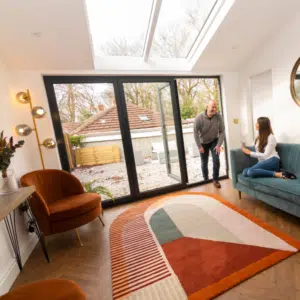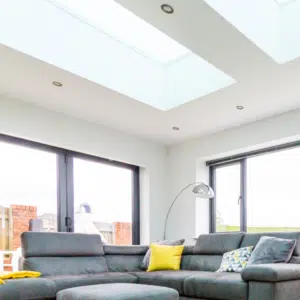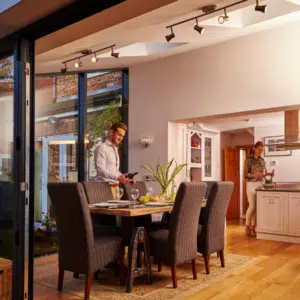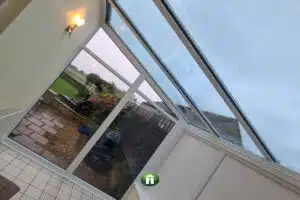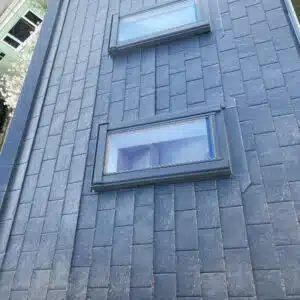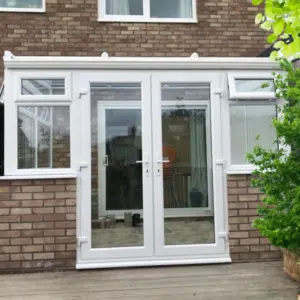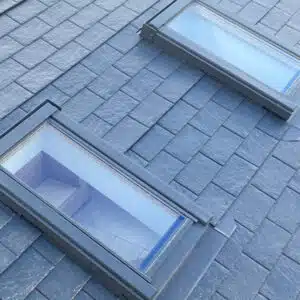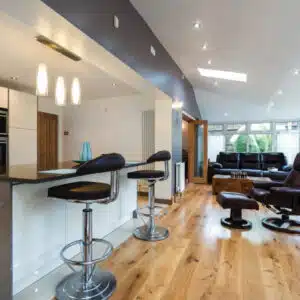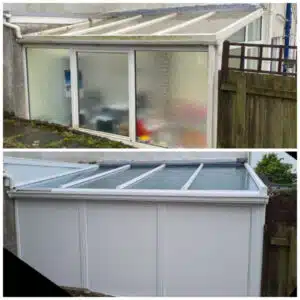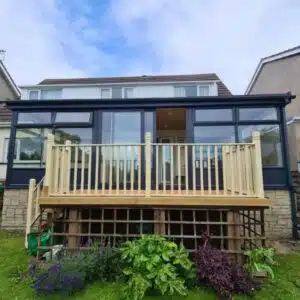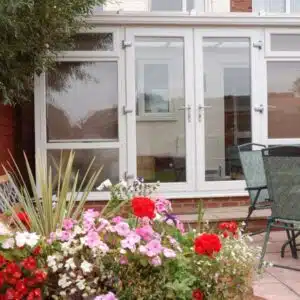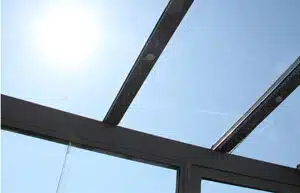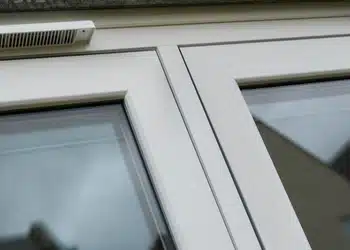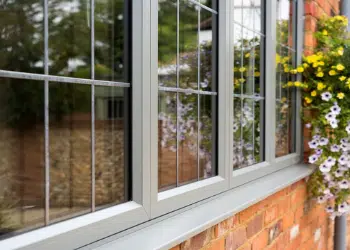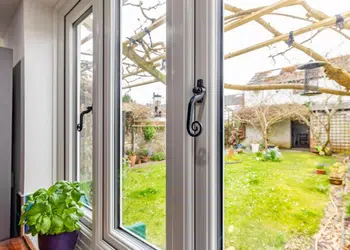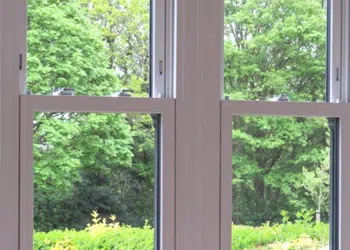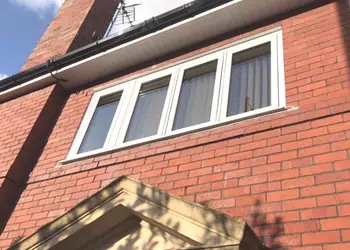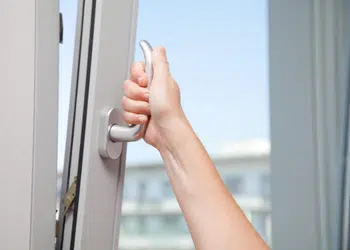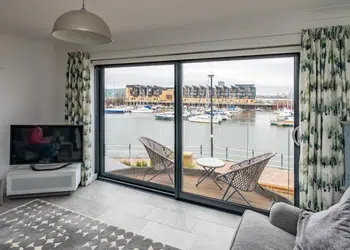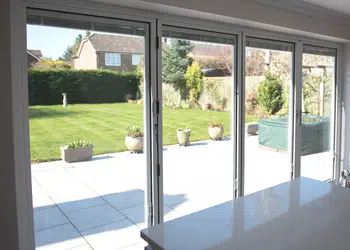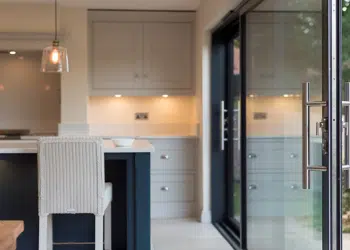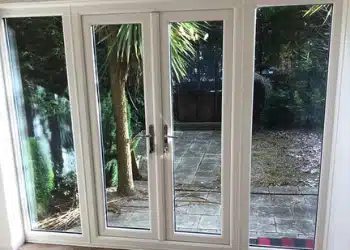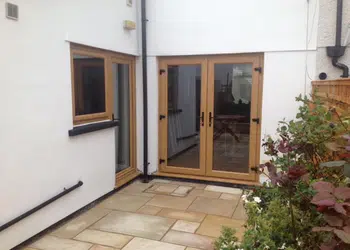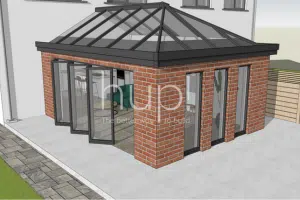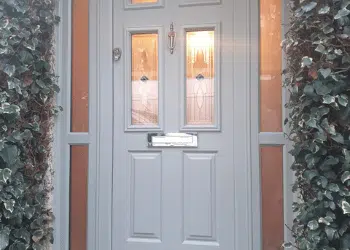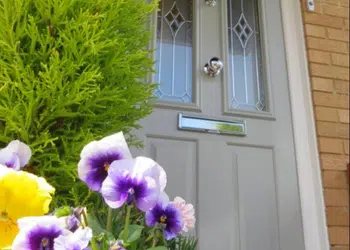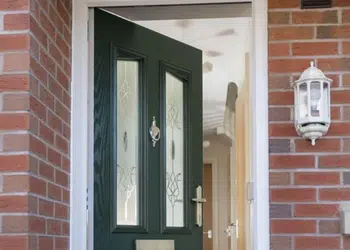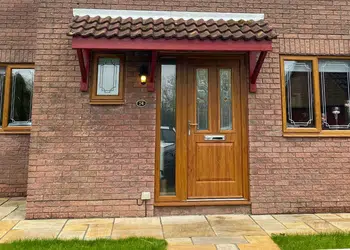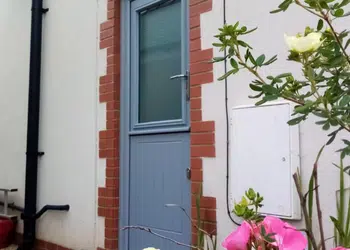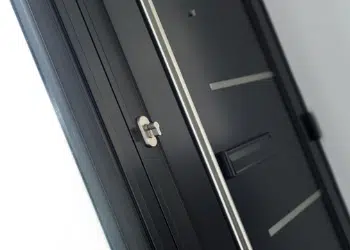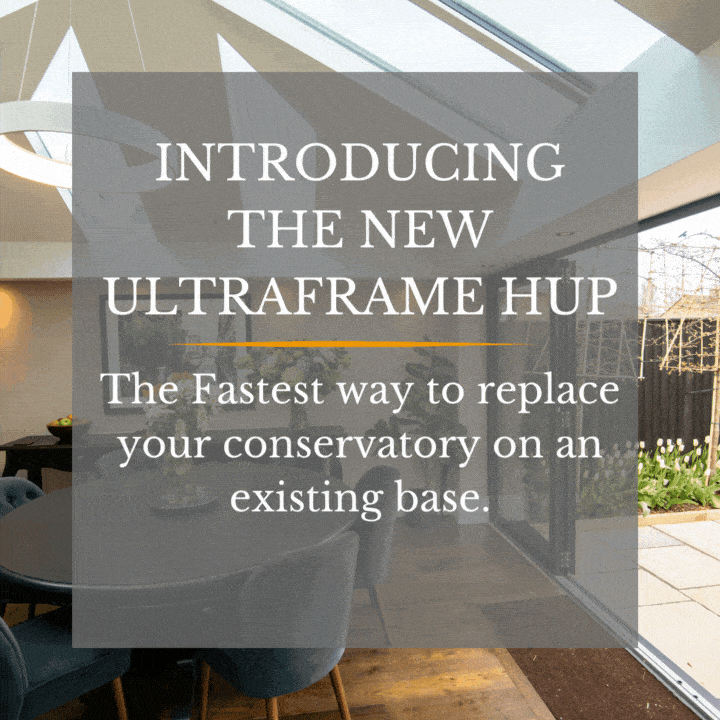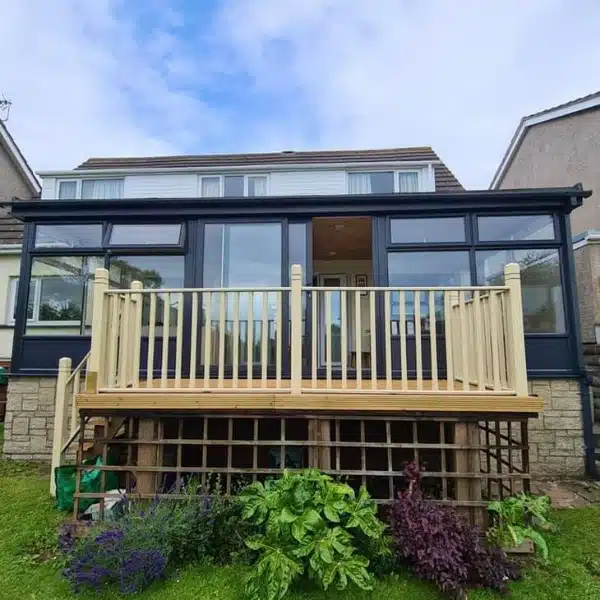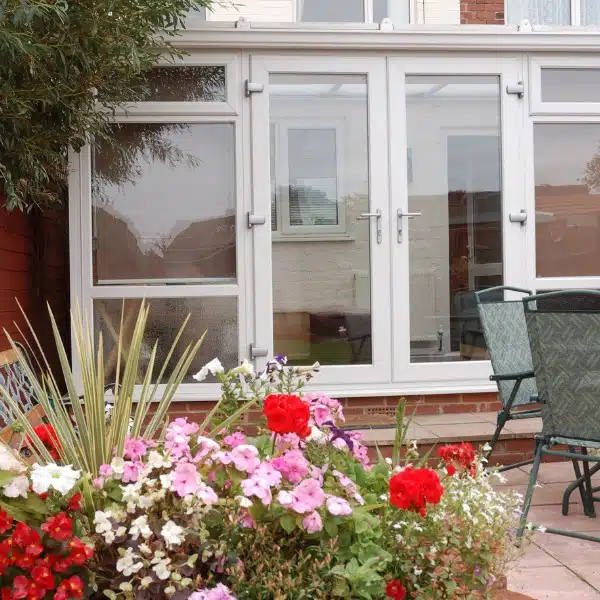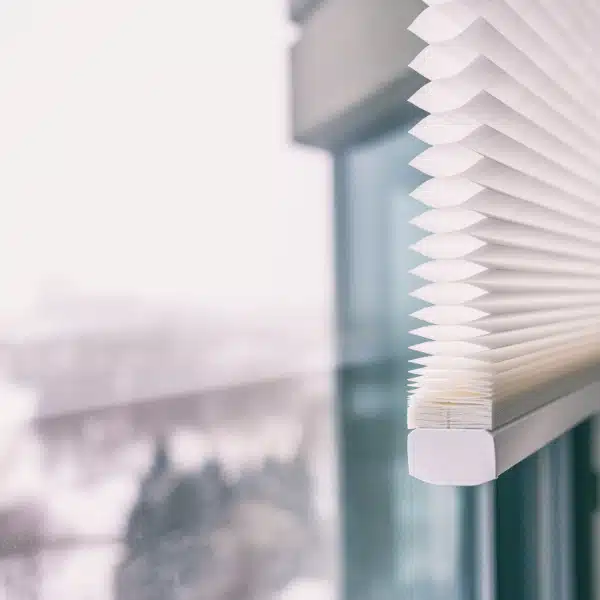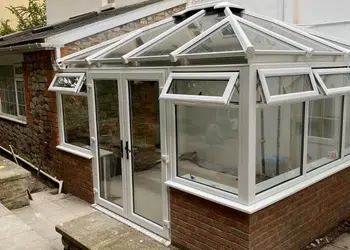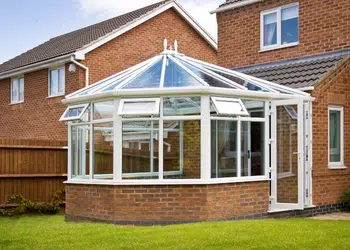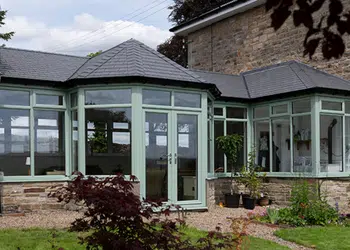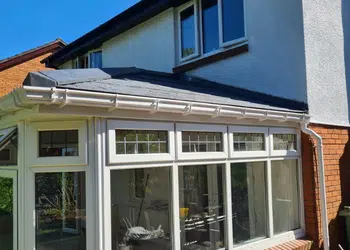Cardiff's Premier Double Glazing Installer - Windows, Doors, Conservatories and Roofs
Classic Lean-to Conservatories
What do you need to consider when choosing a conservatory? It’s an important decision that you will live with for many years, so it’s important to consider all of the options.
Simplicity and Elegance
Often, the lean-to-conservatory style is chosen because of its simple elegance. Lean-to-conservatories are also the perfect option for those who have height restrictions such as with bungalows. Often the height of the roof must start at a higher point than the bungalow wall.
A Lean-to-conservatory suits modern and traditional homes.
Easy Appointment Booking
Book your appointment online, send a message or call 02920 65 0854
Why Choose a Lean-to Style Conservatory?
The lean-to style conservatory roof is the most simple roof construction, so it is usually the cheapest.
If you look at all other conservatory roofs, you will see that at least one of the roof panes is a triangle. Even the gable conservatory, which has rectangular panes of glass on the roof, has a triangle in the gable.
The shaped glass is more expensive to produce. More glass and longer profiles are also required because the roof is higher.
This difference can be important if you plan to have roof blinds. Shaped blinds are 1.5 times the cost of rectangle blinds.
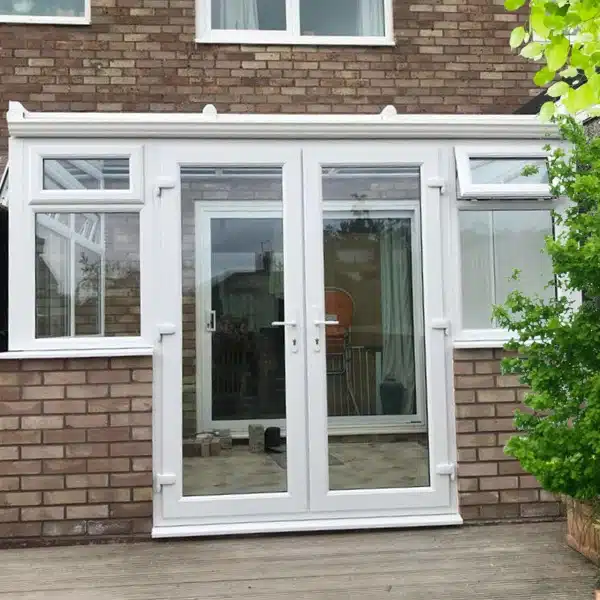
A New Lean-to-Conservatory is Perfect for Limited Space
Ideal for those who live in bungalows, or where the space doesn’t quite accommodate a more complex conservatory, lean-to conservatories are a great way to add some extra living space. The pitch of the roof on a lean-to-conservatory can vary in size. A shallow pitch works well with bungalows, and a steeper pitch is great for a two-storey house. You can even have a reverse lean-to. Naturally, we will discuss all of these options with you.
Conservatories add light and space to a home, offering a bright space which is perfect for entertaining guests in, especially in the summertime when it lends itself perfectly to being a garden room.
To Use Your Lean-to-Conservatory as an Office, Consider a Tiled Roof
Life at home has changed recently for many people and the extra space of a conservatory has become more valuable as a year-round room. If this is the case for you, you may wish to consider a tiled roof conservatory. This will give you the feel of a room but with more light coming in as the windows form the walls.
The addition of extra living space will benefit you now and in the future. The way your conservatory is used may change as families grow and change, and it adds value to the house if you decide to sell.
If you like to grow plants, a lean-to-conservatory is an ideal environment for growing, due to the amount of sunlight they let in. You could even try growing citrus fruits.
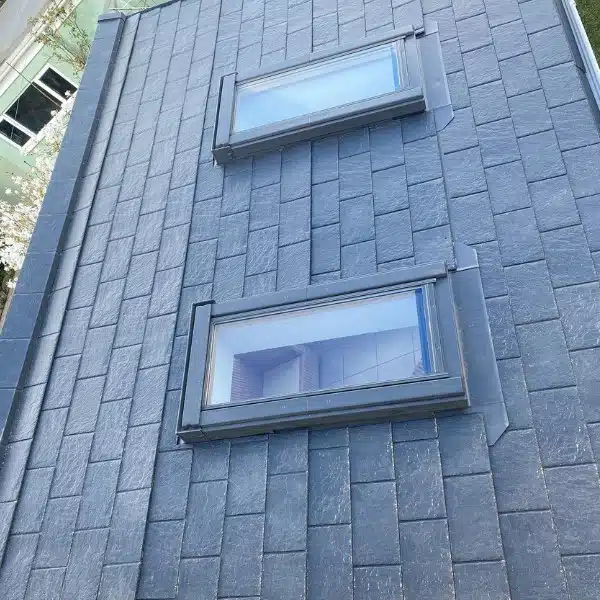
Will You Need Conservatory Blinds?
Our lean-to-conservatory glazing system offers superior thermal performance to ensure maximum heat retention and light diffusion. Modern glass usually provides enough protection for most people if the conservatory is being used for casual use.
If you plan to use your lean-to-conservatory all year round, you may need blinds, particularly if your conservatory faces South.
Lean-to- conservatory roofs help to reduce the cost as shaped blinds tend to cost approximately 50% more than rectangles. Ask your blind supplier if it’s possible to reduce the number of blinds by measuring for 1 blind per 2 roof panes. This will reduce the price considerably.
If you think a lean-to conservatory is right for your home, we’re more than happy to help you find out more about them.
What is a Mediterranean Conservatory?
A Mediterranean conservatory is just a fancy marketing term for a lean-to-conservatory. The modest design features a slanted roof that’s inspired by the sunny, warm climate of the Mediterranean region. This type of conservatory is characterised by its straightforward structure, featuring a single-slanted roof system that leans against the main wall of the house. The low-pitch roof makes it a popular choice for homes with limited space or for those looking to add a compact, yet light-filled extension.
The simple shape of a Mediterranean conservatory gives a contemporary look that also works well for traditional homes.
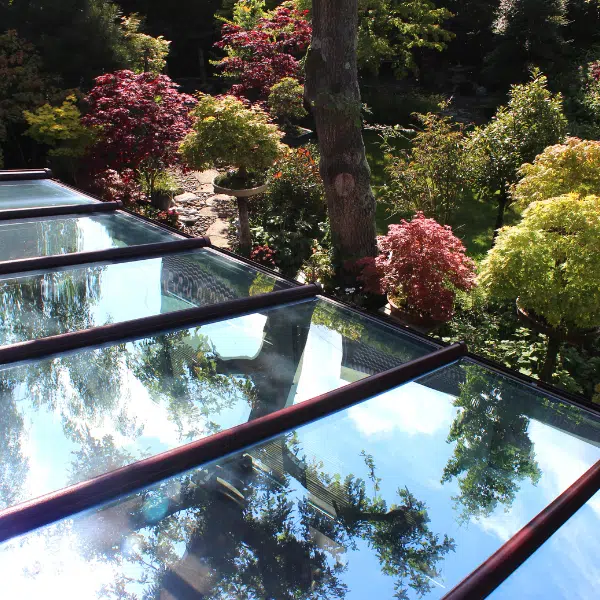
Other Conservatory Styles
Besides the lean-to-conservatory, there are several other styles you can choose for your home. For a classic look, you might like the Victorian conservatory with its fancy roof and rounded front – it’s great for adding a bit of old-school charm. If you prefer something simpler and more straight-edged, the Edwardian (or Georgian) conservatory could be right for you. It’s got a flat front and lots of room inside, perfect for making the most of the space.
For those who want something bigger, there’s the P-shaped conservatory that mixes the lean-to and Victorian styles, giving you the best of both worlds. If you’re after something that feels more like a traditional part of the house, check out the orangery. It’s solid and cosy with big windows and a stunning roof, making it a classy space to hang out in. No matter what style you pick, adding a conservatory is a fantastic way to get more space and enjoy your garden all year round.
A Room You Can Use All Year Round
If your aim is to transform your lean to conservatory so that it can be used every day, a tiled conservatory roof will probably be the most appropriate choice.
In terms of maintenance, tiled roofs outperform most of their rivals as they require virtually no upkeep and have a long lifespan.
Combination Roofs.
To enjoy a combination of warmth, light and year-round usage, a new conservatory roof that uses a combination of tile and glazed panels will meet your requirements.
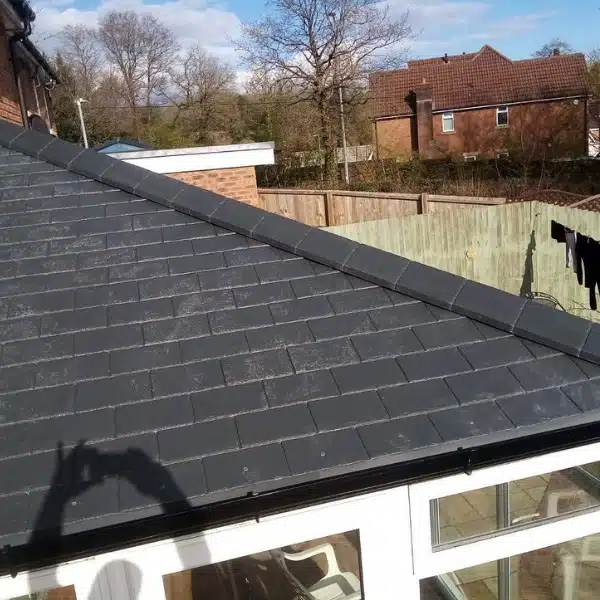
Lean to Conservatories FAQ
How Much Does a Lean-to Conservatory Cost?
To use a much-quoted answer; ‘how long is a piece of string?’ It really is as diverse as that. You can buy cheap lean to conservatories that sit on concrete slabs. That’s probably the cheapest way if that’s the priority. Will they stand the test of time? It’s a gamble, and you won’t know the answer until it fails or is too cold and damp to use. The same applies if you buy from the cheaper nationals. If you can negotiate, you may get a good price, but please look at the feedback on Trustpilot before ordering.
The cost will depend on several factors. Quality has an effect on the price, both in the materials used and the fixings. The difficulty for you as the customer is knowing the difference. Roofs, windows and doors look the same when they are fitted. It’s only in time that you start to see windows dropping because the hinges aren’t sturdy enough or frames bowing because the aluminium or steel inside the frame is not strong enough. The fitting can also make a difference. Your windows need to move smoothly, and this relies on level fitting. Unfortunately, the industry is known for sub-contractors who value speed over quality. That’s the reason that, as a premier window supplier, we fully employ our installation engineers. They know that quality takes precedence and will take their time to ensure the perfect installation.
Sometimes the perception is related to house value. There is no difference in cost whether you live in Cardiff or anywhere else. A conservatory costs the same whether you have a 2-bed bungalow in the South Wales countryside as it does for a 6-bedroom house in the middle of Cardiff.
The difference is that when you pay for quality, you can expect your conservatory to last a lot longer. With double glazing, you really do get what you pay for. Our quotes are free and without obligation, so there’s no harm in letting us measure up. Pop your details in the chat below, visit the contact page, call 02920 650 854 or book an appointment online and we’ll give you a call to arrange to come and measure for you.
Is Finance Available for Lean to Conservatories?
Our complete range of products is available on finance including double-glazed, windows and doors and conservatories.
If you are considering a new lean to conservatory, contact us first to arrange for us to visit, measure up and provide a quotation.
Before making a decision about a new conservatory, consider your budget and all of the available options carefully, as this will help you to settle on a solution that provides maximum enjoyment.
What Size is a Lean-to Conservatory?
The size of a lean-to-conservatory can vary depending on individual preferences, available space, and budget constraints. However, typical sizes for lean-to-conservatories range from small, compact structures to larger, more spacious designs.
Small lean-to conservatories might have dimensions such as 2.5 meters (width) by 2 meters (depth), providing enough space for a cosy seating area or garden retreat. Medium-sized lean-to conservatories could measure around 3.5 meters (width) by 3 meters (depth), offering more room for seating, dining, or recreational activities. Larger lean-to conservatories might extend up to 5 meters (width) by 4 meters (depth) or even larger, providing ample space for entertaining, gardening, or creating a multifunctional living space.
Ultimately, the size of a lean-to conservatory depends on individual needs, preferences, and available space. Staying within permitted development rights may also affect your choice.
We always recommend that you get as much space as you can afford, and is reasonable, because it’s expensive to extend later.
When thinking about your conservatory space, remember to think about the inside area as brick walls take up about 25cm. If you are thinking of a 3m x 3m, that will end up approximately 2.5m x 2.75 because you need to allow for two side brick walls.
Do You Need Planning Permission for a Lean-to Conservatory?
Adding a lean-to-conservatory to your home is an exciting way to expand your living space. In South Wales, as with the rest of the UK, whether you need planning permission largely depends on specific criteria related to the size and location of the conservatory.
Generally, lean-to conservatories fall under “permitted development” as long as they adhere to certain conditions, so you don’t need planning permission. The conditions are as follows:
- The conservatory does not cover more than half the land around the “original house.”
- It is not higher than the highest part of the roof.
- For a single-storey rear extension, it does not extend beyond the rear wall of the “original house” by more than three meters if an attached house, or four meters if detached.
- The height does not exceed four meters.
However, if your home is in a conservation area, an Area of Outstanding Natural Beauty, or a World Heritage Site, there might be stricter rules. Also, if your property is listed, you’ll definitely need to apply for planning permission.
We recommend always checking planning permission rules with your local planning authority in South Wales to get the most accurate advice for your specific situation. At Heath Windows and Doors, we’re more than happy to guide you through the process, ensuring that adding a conservatory to your home is as straightforward and hassle-free as possible. Feel free to get in touch with us for any advice or assistance you might need!
Is a Lean-to-conservatory the Only Solution for a Bungalow?
You can definitely choose from a wide range of conservatory styles for a bungalow, and it’s not limited to just the lean-to-conservatory roof. The key factor to consider is how the conservatory’s roof integrates with the height of the bungalow. Most styles can be adapted to suit a bungalow’s lower profile by adjusting the roof design.
For conservatories that have a peak higher than the bungalow’s roof, a double hipped roof can be a fantastic solution. A double hipped roof slopes down on both sides as well as the front and back, allowing it to meet the bungalow at a lower height. This clever design ensures that the conservatory feels like a natural extension of the home, regardless of its original height.
So, whether you’re dreaming of a Victorian, Edwardian, or a more bespoke conservatory style, there’s usually a way to make it work with your bungalow. By focusing on the roof design and ensuring it can be adjusted to align with your bungalow’s height, you can enjoy the conservatory style you love without any major compromises.
Lean to Conservatory Gallery

